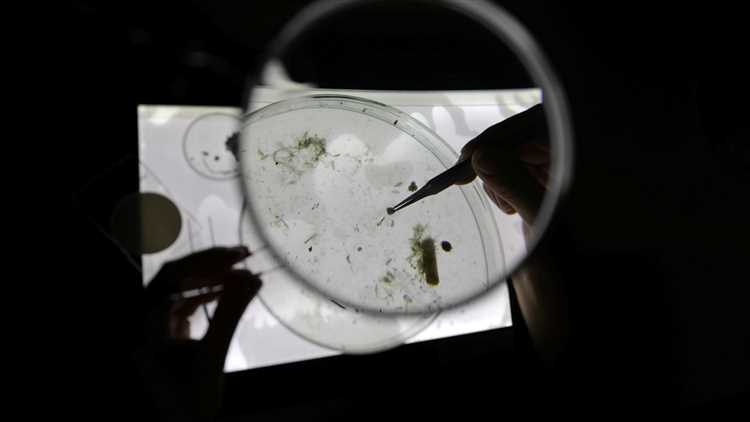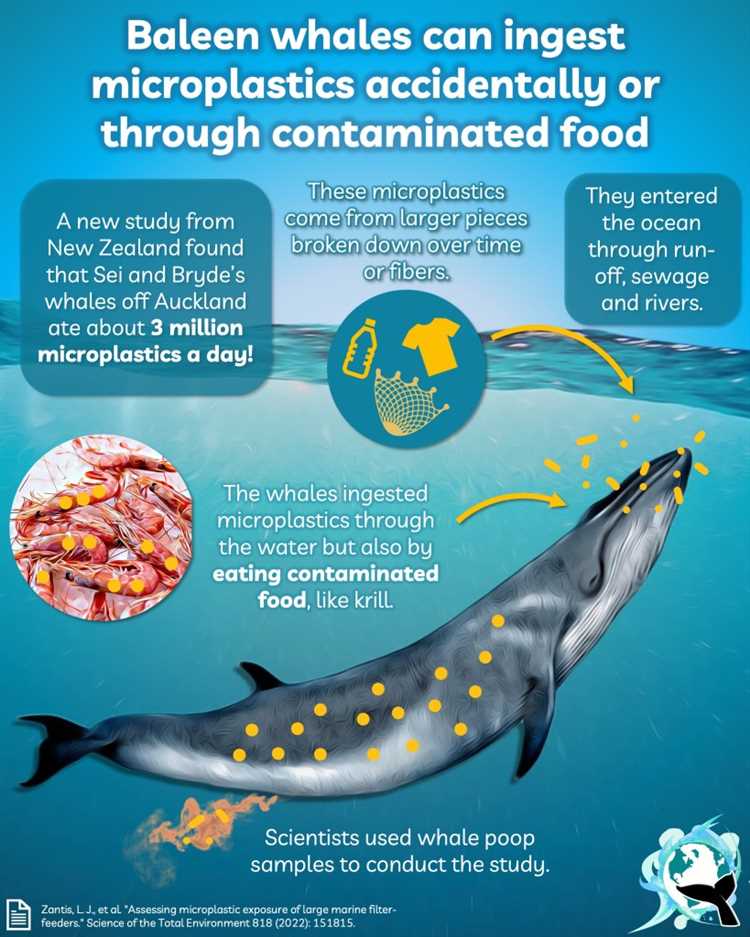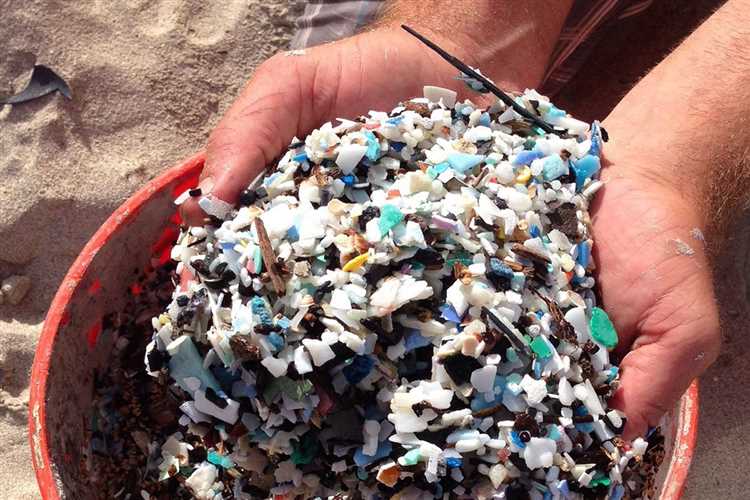
In recent years, the issue of microplastics has gained increasing attention as their presence has been detected in various environments such as oceans, rivers, and even in the air we breathe. However, a new study has raised a puzzling question: do we poop them? Yes, you read it right! Researchers have found evidence that these tiny plastic particles are not only contaminating our surroundings but may also be present in human excrements.
The study, conducted by a team of scientists from the University of Vienna, analyzed stool samples from individuals across different regions and lifestyles. The results revealed that microplastics were indeed present in all of the samples examined, confirming the alarming extent of this issue.
Microplastics are tiny plastic particles, smaller than 5 millimeters in size, that originate from a variety of sources such as plastic waste, clothing fibers, and even cosmetics. These particles can enter our bodies through ingestion of contaminated food and water, as well as through inhalation. Once inside our bodies, they can accumulate and potentially cause adverse health effects.
- The Connection Between Microplastics and Human Excrements
- Understanding the Presence of Microplastics in Our Waste
- Sources of Microplastics
- The Impact on the Environment
- The Impact of Microplastics on Human Health
- Respiratory Problems
- Gastrointestinal Issues
- How Microplastics Enter Our Bodies
- Examining the Research on Microplastics in Human Excrements
- Findings from these studies
- Potential health implications
- Addressing the Concerns and Solutions
- Question-answer:
- What are microplastics?
- How do microplastics end up in human excrements?
- Are microplastics harmful to human health?
- Can we prevent the presence of microplastics in human excrements?
The Connection Between Microplastics and Human Excrements

Microplastics have become a significant concern due to their widespread presence in various ecosystems, including the marine environment, freshwater bodies, and even the air we breathe. These tiny plastic particles, typically measuring less than 5 millimeters, have been found in a wide range of organisms, from fish and shellfish to birds and mammals.
Recently, studies have revealed that microplastics are not only present in the environment but also in the human body. Various research projects have detected microplastics in human tissues, such as the gastrointestinal tract, liver, and even in the placenta. However, it remains unclear how exactly microplastics enter our bodies and what implications their presence may have on human health.
One possible route for microplastics to enter our bodies is through the ingestion of contaminated food and water. Microplastics have been found in various food items, including seafood, salt, and even bottled water. As we consume these contaminated products, the microplastics can enter our digestive system and eventually end up in our excrements.
Another potential source of microplastics in human excrements is the ingestion of microplastics directly. It has been found that microplastics can be released from certain products, such as plastic bottles, packaging, and even clothing fibers. When these products come into contact with our mouths, we may unknowingly ingest microplastics, which can then pass through our digestive system and be eliminated in our excrements.
Understanding the connection between microplastics and human excrements is crucial for evaluating the potential risks associated with microplastic exposure. It is important to determine the extent to which microplastics accumulate in our bodies and whether they can have any detrimental effects on our health.
Further research is needed to unravel the mysteries surrounding microplastics and their presence in human excrements. Scientists are exploring innovative techniques to detect and quantify microplastics in excrements more accurately. Additionally, studies are being conducted to investigate the potential health effects of microplastic exposure, such as inflammation, oxidative stress, and the potential transfer of contaminants associated with microplastics.
By gaining a better understanding of the connection between microplastics and human excrements, we can take appropriate measures to mitigate the impacts of microplastics on our health and the environment. This may involve reducing our reliance on single-use plastics, improving waste management systems, and promoting the adoption of more sustainable alternatives.
Understanding the Presence of Microplastics in Our Waste
Microplastics are tiny particles of plastic that measure less than 5 millimeters in size. They are found in a variety of products, from clothing fibers to packaging materials, and they can also be generated from the breakdown of larger plastic items.
Sources of Microplastics
The presence of microplastics in our waste can be attributed to various sources. One major source is the improper disposal of plastic products. When plastic items are thrown away in regular trash bins, they can end up in landfills or incinerators, where they can break down into smaller particles over time.
Another source of microplastics is the shedding of tiny plastic fibers from synthetic textiles. These fibers can be released during the washing of clothes made from materials like polyester, nylon, and acrylic. They can then enter our wastewater systems and eventually make their way into rivers and oceans.
The Impact on the Environment
The presence of microplastics in our waste has significant implications for the environment. These particles are not biodegradable and can persist in the environment for hundreds of years. They can be ingested by various organisms, including marine life, and can accumulate within their bodies, leading to potential harm.
Microplastics can also contribute to the pollution levels in our waterways. As they accumulate and become more concentrated, they can pose a threat to ecosystems and the overall health of our planet.
| Source | Potential Impact |
|---|---|
| Improper disposal of plastic products | Contributes to microplastic pollution in landfills and incinerators |
| Shedding of plastic fibers from textiles | Contaminates waterways and aquatic life |
It is essential to understand the presence of microplastics in our waste and the potential consequences they can have on the environment. By raising awareness and taking proactive measures to reduce plastic waste, we can work towards mitigating the impact of microplastics on both our own health and the health of our planet.
The Impact of Microplastics on Human Health

Microplastics, which are tiny particles of plastic less than 5 millimeters in size, have become a growing concern due to their widespread presence in the environment. These minuscule plastic particles can be found in various products, such as food packaging, cosmetics, and even clothing. As a result, they have made their way into our bodies through ingestion and inhalation.
Studies have shown that microplastics can have adverse effects on human health. For instance, they can accumulate in different organs, potentially causing inflammation and oxidative stress. These particles have been found in the gastrointestinal tract, liver, and even in human feces, suggesting that they can penetrate deep into our bodies.
In addition to their physical presence, microplastics can also pose a chemical risk. They contain various additives and pollutants, such as phthalates and bisphenol A, which have been linked to endocrine disruption and other health issues. These chemicals can leach out of the microplastics and enter our bloodstream, potentially affecting our hormonal balance.
Respiratory Problems
One of the major concerns regarding microplastics is their impact on the respiratory system. Inhalation of these particles can lead to respiratory problems, such as asthma, respiratory tract inflammation, and reduced lung function. This is particularly worrisome for individuals who are exposed to high levels of microplastics, such as workers in plastic manufacturing industries or those living in heavily polluted areas.
Gastrointestinal Issues

The gastrointestinal tract is another area where microplastics can have a significant impact. These particles can accumulate in the intestines, potentially causing digestive problems and irritation. They can also disrupt the gut microbiome, which plays a crucial role in our overall health. Imbalances in the gut microbiome have been linked to various health conditions, including obesity, diabetes, and immune disorders.
Furthermore, the presence of microplastics in our food and water sources raises concerns about potential long-term effects. While more research is needed to fully understand the extent of these health risks, it is clear that our excessive use of plastic and improper waste disposal practices have come at a cost to human health.
Overall, the impact of microplastics on human health is a growing area of concern. From their physical accumulation in organs to their potential chemical risks, these tiny plastic particles can have far-reaching effects. Further research is needed to fully understand the long-term consequences and develop strategies to reduce our exposure to microplastics.
How Microplastics Enter Our Bodies
Microplastics can enter our bodies through various routes of exposure. The most common pathway is through the ingestion of contaminated food and water. Microplastics have been found in a wide range of food items, including seafood, salt, honey, and even beer. These particles can contaminate our food chain at different levels, starting from the marine environment where they are ingested by small organisms, which then get consumed by larger organisms, eventually ending up on our plates.
In addition to food and water, microplastics can also enter our bodies through inhalation. These tiny particles are present in the air we breathe, especially in urban areas where plastic pollution is high. They can be released into the air through the degradation of larger plastic items, such as packaging materials, and can easily be inhaled and deposited in our respiratory system.
Another possible route of exposure is through dermal absorption. Although the amount of microplastics that can penetrate the skin is still under investigation, studies have shown that certain types of microplastics, such as nanoplastics, can enter the skin and reach underlying tissues.
Once microplastics enter our bodies, they can potentially accumulate in different organs and tissues. Research has shown that these particles can translocate across cell membranes and enter bloodstream, lymphatic system, and even reach the placenta in pregnant women.
Understanding how microplastics enter our bodies is crucial for assessing the potential health risks associated with their presence. Further research is needed to determine the long-term effects of microplastic exposure and to develop strategies for reducing our exposure to these particles.
Examining the Research on Microplastics in Human Excrements
Microplastics have emerged as an environmental concern in recent years, with their presence being detected in various ecosystems, including marine environments, freshwater bodies, and even in the air we breathe. However, one area that has received relatively little attention is the potential presence of microplastics in human excrements.
A growing body of research has started to explore this topic, aiming to understand the extent to which microplastics may be present in human feces. Studies have utilized techniques such as microscopy, spectroscopy, and chemical analysis to detect and quantify microplastics in fecal samples.
Findings from these studies
The findings so far are both intriguing and concerning. Researchers have found microplastics in human excrements across diverse populations and geographical locations. These microplastics come in various forms, including fibers, fragments, and beads, and are composed of a wide range of polymers such as polyethylene, polypropylene, and polyethylene terephthalate.
It is important to note that the detected levels of microplastics in human excrements vary widely. Some studies have reported relatively low concentrations, while others have found higher levels. The variations may stem from factors such as diet, lifestyle, and geographic location.
Potential health implications
The presence of microplastics in human excrements raises concerns about potential health implications. While the exact effects of ingesting microplastics are still not well understood, research has indicated that these particles could have negative impacts on the digestive system and potentially even on other organs.
Furthermore, the potential for microplastics to act as carriers for other toxic contaminants is another area of concern. Studies have shown that microplastics can attract and accumulate other pollutants from the environment, such as heavy metals and persistent organic pollutants. If these microplastics are present in human excrements, they could potentially contribute to the spread and accumulation of these harmful substances within the body.
Overall, examining the research on microplastics in human excrements highlights the need for further investigation and a better understanding of the potential risks associated with their presence. This research can inform future policies and interventions aimed at minimizing the release of microplastics into the environment and reducing human exposure to these pollutants.
Addressing the Concerns and Solutions
The presence of microplastics in human excrements raises important concerns about the potential risks to human health and the environment. It is essential to address these concerns and find appropriate solutions to minimize the impact of microplastics on our lives.
Firstly, extensive research is needed to understand the extent of microplastic contamination in different parts of the world. This information will help create awareness among the public and policymakers and drive the development of appropriate regulations and guidelines.
Secondly, efforts should be made to reduce the production and consumption of plastic products. This can be achieved through the implementation of strict plastic waste management policies, promoting the use of alternative materials, and encouraging recycling and upcycling practices.
Furthermore, wastewater treatment facilities should be upgraded to effectively filter out microplastics from sewage. This may involve the use of advanced filtration technologies and the development of specific methods for capturing and removing microplastics from the wastewater stream.
Educating the public about the harmful effects of microplastics and how to minimize their exposure is also crucial. This can be done through awareness campaigns, educational programs, and the dissemination of accurate and accessible information.
Additionally, further research should be focused on understanding the potential health impacts of microplastics on humans. This will require rigorous studies and collaboration between scientists, healthcare professionals, and regulatory bodies.
In conclusion, addressing the concerns associated with the presence of microplastics in human excrements requires a multi-faceted approach involving research, regulation, technological advancements, education, and public awareness. By implementing effective solutions, we can mitigate the risks posed by microplastic contamination and work towards a cleaner and healthier environment.
Question-answer:
What are microplastics?
Microplastics are tiny, often microscopic, particles of plastic that can be as small as 1 micrometer in size. They are created through the degradation and fragmentation of larger plastic items such as bottles, bags, and clothing.
How do microplastics end up in human excrements?
Microplastics can enter the human body through ingestion of contaminated food and water. Once inside the body, they can pass through the digestive system and eventually be excreted in feces. Studies have shown that microplastics are present in various food and drink items, including seafood, salt, and bottled water.
Are microplastics harmful to human health?
The potential health effects of microplastics on human beings are still not fully understood and require further research. However, studies conducted on animals have shown that exposure to high levels of microplastics can lead to adverse health effects, such as inflammation, organ damage, and disruptions to the immune system and hormone balance.
Can we prevent the presence of microplastics in human excrements?
While it may be difficult to completely prevent the presence of microplastics in human excrements, there are steps individuals can take to reduce their exposure. These include minimizing the use of single-use plastics, opting for natural and organic food products, and using water filters to remove microplastic contaminants.